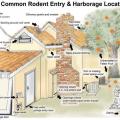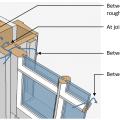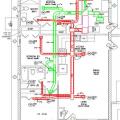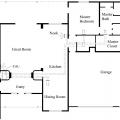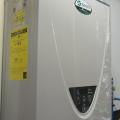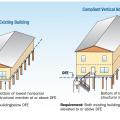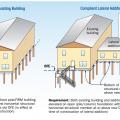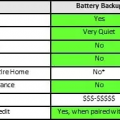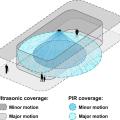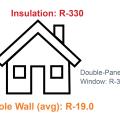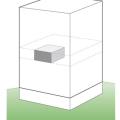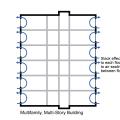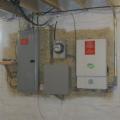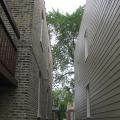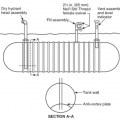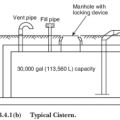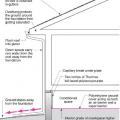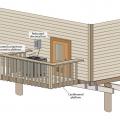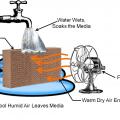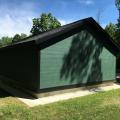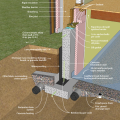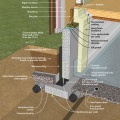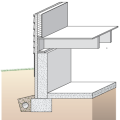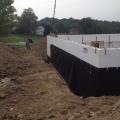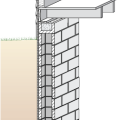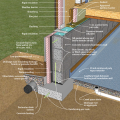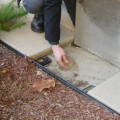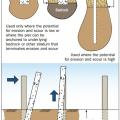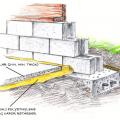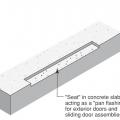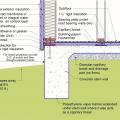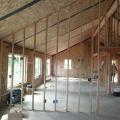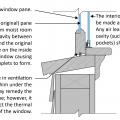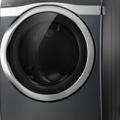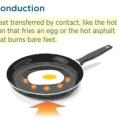Showing results 801 - 850 of 4973
Compare gas tankless water heater efficiencies on the Energy Guide labels or look for the ENERGY STAR label
Comparison of a building that sits below the Design Flood Elevation and renovated to be above the DFE and to add a second story.
Comparison of a building that sits below the Design Flood Elevation and renovated to be above the DFE.
Comparison of a building that sits below the Design Flood Elevation and renovated to be above the DFE.
Comparison of costs for preventing vs. repairing earthquake damage from unreinforced masonry chimney failure
Comparison of potential motion detection ranges for a passive-infrared sensor and an ultrasonic sensor used for lighting controls
Comparison of three homes showing the amount of wall insulation needed to achieve a whole-wall insulation value of R-19 when the wall has double- versus triple-pane windows
Compartmentalization isolates each dwelling unit within a multistory multifamily building, preventing vertical and horizontal airflow between units
Compartmentalization isolates each dwelling unit within a rowhouse, preventing horizontal airflow between units
Compartmentalization uses air sealing to reduce the stack effect in a multistory building - the large vertical pressure difference in a tall building is separated into smaller pressure differences at each floor
Completed wall retrofit of masonry home (on right) showing new lap siding attached over four inches of rigid foam; windows were boxed with plywood to accommodate depth of foam plus 1x4 furring strips
Components and cross section of an underground fiberglass storage tank used for residential fire suppression.
Components of a heat pump water heater
Components of a networked lighting system, their location, and communication (digital or analog) and wiring (wired or wireless) connections between each component.
Components of a residential underground concrete fire suppression cistern include a manhole, suction connection, vent, and fill pipes
Composition shingle roofing system showing sheathing and hot-mopped underlayment
Comprehensive above-grade water management details for a crawlspace foundation include a capillary break over the crawlspace floor, slope the surface grade away, installing gutters that slope away, and capillary break under sill plate.
Comprehensive water management features include a capillary break (≥ 6-mil polyethylene sheeting) at all crawlspace floors
Concept behind an evaporative cooler – warm air is cooled as the air passes through a wet medium and gives up some of its heat to evaporate the water
Concrete (4 inches thick at 5% slope) provides a pest-resistant perimeter around the foundation
Concrete is being poured into the wall forms made by the rigid foam insulated concrete form blocks.
Concrete is poured into the rigid foam shell of the insulated concrete form (ICF) walls; a plastic water barrier has already been installed to protect the below-grade wall surfaces.
Concrete pavers set in 4 inches of sand provide a pest-resistant ground break at the building perimeter.
Concrete pier foundations can be used in place of wood piles in coastal areas where risk of erosion and scour is low.
Concrete slab-on-grade foundation with a turn-down footing insulated on its top surface, showing anchorage of the wall to the foundation for seismic resistance
Concrete slabs are used on both the first and second floors of this SIP home to provide passive solar heating from large south-facing windows.
Condensate from this heat pump water heater is routed to a nearby floor drain, shared with the condensate lines from a condensing gas furnace and an air conditioning coil
Condensation can form between the interior removable storm window and the existing window if the storm window is not air tight
Condensation in storm windows can be prevented by air sealing around the storm window and allowing some ventilation to the outside from the original window
Conduction is heat transferred by contact, like the hot pan that fries an egg or the hot asphalt that burns bare feet.

